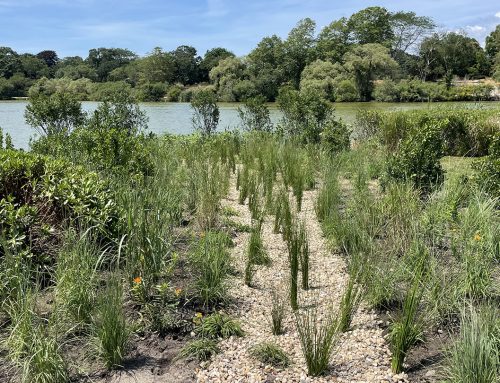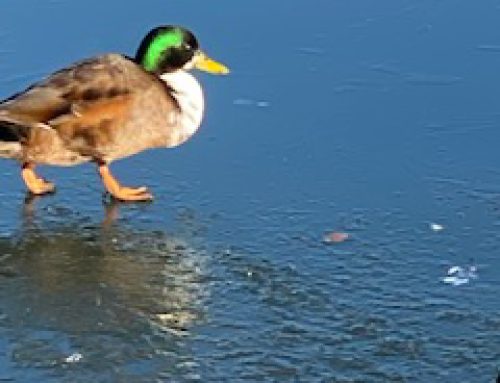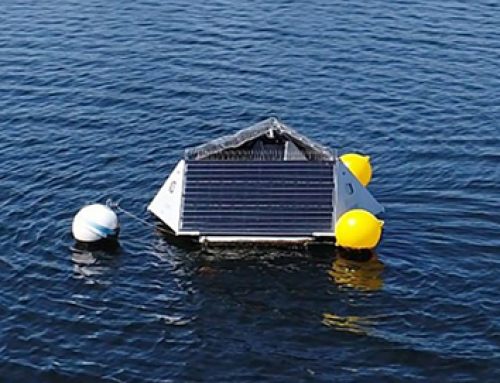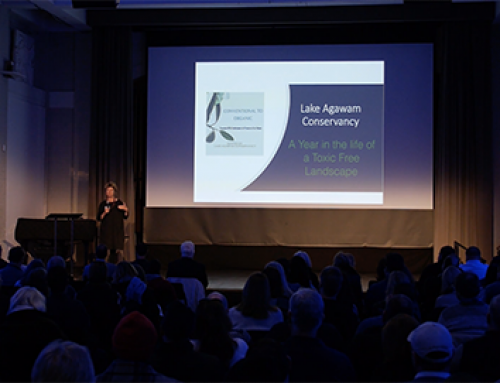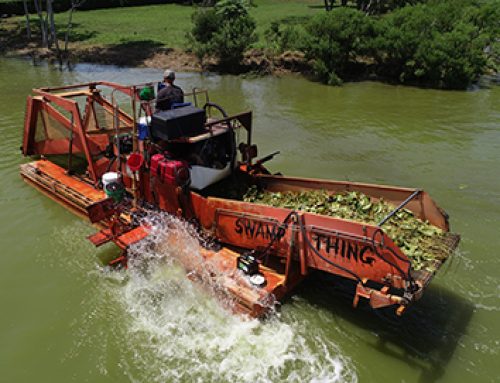
This spring has been busy for the Lake Agawam Conservancy- planting and planning new water cleansing gardens, or “bioswales”, beyond the Lake’s shoreline and clearing the final hurdle for the filtration system that will extract harmful algae from the lake. Two new bioswales were planted this May, one on the Village Green and the second along Old Town Pond.
In early May, the Conservancy worked with Jacob Antilety Landscaping, who restored and replanted the highly visible and often flooded Village Green across from Rogers Memorial Library on Nugent Street. This restoration was done in partnership with the consulting engineers for the Village, who ensured that the stormwater now filters into the bioswale. This once barren 150-foot-long roadside expanse is filled with native wildflowers, herbaceous plants and trees that will intercept and purify stormwater run-off before it reaches the water table. The bioswale will grow lush and dense with time, but it is doing its work already.
The Village Green bioswale is divided into two parts: “the bank” and the “swale” or “basin”. The bank has three types of trees and eight types of herbaceous plants, including Agastache ‘Blue Fortune’ which is a great pollinator with blue flowers in late summer; Coreopsis ‘Sun Kiss’, a pollinating coreopsis with a great yellow flower; a native Bee Balm, Monarda fistulosum, with its a soft blue flower, and Mountain Mint. Wildflower and perennial seeds are also sown throughout, including Larkspur, Baby’s Breath, Sweet William, Forget-Me-Nots, and Lupines. The goal is to have neither mulch nor dirt showing, and to see what takes root and flourishes.
The basin is often filled with rainwater so it requires plants that will slow down the stormwater run-off and absorb the standing water. Three types of trees are planted here: Nyssa sylvatica ‘Wildfire’, a cultivar of the native Black Gum (Tupelo) with vibrant fall reddish color and branches that birds love to sit on. These will provide some shade to the understory, as will Magnolia virginiana with its shiny green foliage and a saucer shaped white flower. Wildlife will flock to Ilex verticillata, the Common Winterberry we see growing in swamps and along pond edges. Birds love its bright red berries in the fall.
The herbaceous plants include a Swamp Milkweed, Asclepias incarnata, with bright pink flowers that attract monarch butterflies; Joe Pye Weed, Eupatorium fistulosum, a standard in every wet garden with its big, broad leaves; Ostrich Fern, which loves being in the water and has bold green foliage; Blue Flag Iris another rain garden stalwart; Juncus effusus, a common rush that thrives in standing water; Lobelia cardinalis, a cardinal flower with stunning red petals that attracts butterflies and hummingbirds; and of course, Hibiscus, the rose flowered, swamp mallow that we all cherish in Southampton
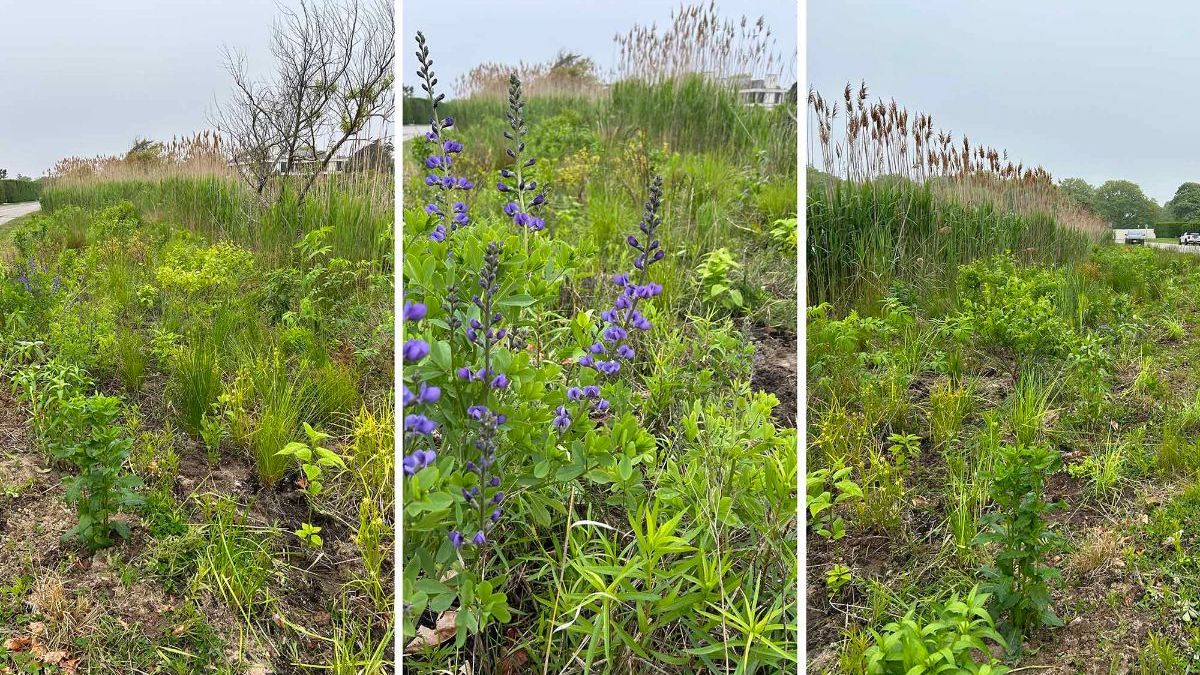
The ragged stretch along the south shore of Old Town Pond has been crying out for help for years. The deer have chomped down its plants, leaving only pernicious knotweed and straggly phragmites. Right after Memorial Day, Tony Piazza of Whitmores Landscaping, began restoring the stretch along the south end that is about 200 feet long and 10 feet deep. He cleaned up the weeds and re-established the area with water absorbent native plants, including many of those discussed above. This highly visible bioswale is a critical first step in strengthening the shoreline of Old Town Pond, which is often flooded.
In the fall, a more extensive wetland restoration will begin at Old Town Pond along with a strengthening of the shoreline using planted coir logs. That project will be paid for with a grant from the Community Preservation Fund and private donations that the Lake Agawam Conservancy raises.
These two new bioswales demonstrate the Conservancy’s commitment to preservation throughout Southampton, not just at the edge of Lake Agawam.
Thanks to the passage of Proposition 3 this past fall, the lake-cleansing algae harvester is ready to be assembled. We hope it will be installed and ready to go to work in early 2026. Our permeable reactive barrier “PRB”, a large underground filtration system that intercepts algae-fueling nitrogen in the groundwater, should be installed at the north end of the Lake after the summer.
Thank you so much for your support of the Conservancy and water restoration efforts throughout Southampton!

